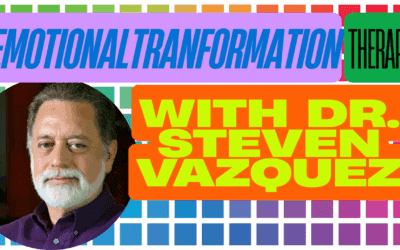What is Yoga Therapy and Trauma-Informed Yoga?
Yoga Therapy is a holistic approach to wellness that applies the principles and practices of yoga to promote health and facilitate healing. It goes beyond the general yoga classes found in studios and gyms, tailoring yoga practices to address specific health conditions and individual needs. Yoga therapists work one-on-one or in small groups to create personalized treatment plans that may include physical postures (asanas), breathing exercises (pranayama), meditation, and other yogic techniques.
Trauma-Informed Yoga is a specialized approach within the broader field of yoga therapy that is specifically designed to support individuals who have experienced trauma. This approach recognizes that trauma affects both the mind and body, and uses yoga practices to help individuals reconnect with their bodies, manage symptoms of trauma, and develop resilience. Trauma-Informed Yoga emphasizes creating a safe and empowering environment, offering choices, and promoting self-regulation skills.
Both Yoga Therapy and Trauma-Informed Yoga draw on the ancient wisdom of yoga while integrating modern understanding of psychology, neuroscience, and the impact of trauma on the body and mind.
Is Yoga Therapy and Trauma-Informed Yoga Evidence-Based?
There is a growing body of research supporting the effectiveness of Yoga Therapy and Trauma-Informed Yoga for a variety of health conditions and for trauma recovery. While more large-scale, rigorous studies are needed, existing evidence is promising:
- Mental Health: Studies have shown yoga to be effective in reducing symptoms of depression, anxiety, and PTSD. A meta-analysis by Cramer et al. (2013) found yoga to be a promising treatment for depression.
- Chronic Pain: Research has demonstrated the effectiveness of yoga for conditions like lower back pain, arthritis, and fibromyalgia. A systematic review by Holtzman and Beggs (2013) found strong evidence for yoga as a treatment for chronic low back pain.
- Trauma Recovery: Studies on trauma-informed yoga have shown promising results. For instance, van der Kolk et al. (2014) found that women with PTSD who participated in trauma-sensitive yoga showed significantly greater reduction in PTSD symptoms compared to a control group.
- Stress Reduction: Numerous studies have demonstrated yoga’s effectiveness in reducing stress and improving overall well-being. A review by Riley and Park (2015) found consistent evidence for yoga’s stress-reducing effects.
- Cardiovascular Health: Research has shown yoga can improve various markers of cardiovascular health. Cramer et al. (2014) found in a systematic review that yoga may be beneficial for managing hypertension.
- Cancer Care: Studies have shown yoga can improve quality of life and reduce fatigue in cancer patients. A meta-analysis by Lin et al. (2011) found positive effects of yoga on psychological health of breast cancer patients.
While these results are encouraging, it’s important to note that the quality of studies varies, and more research is needed to fully understand the mechanisms and optimal applications of yoga therapy and trauma-informed yoga. However, given its low risk and potential benefits, many healthcare providers are integrating yoga therapy into treatment plans for various conditions.
Who Created Yoga Therapy and Trauma-Informed Yoga and What Led to Their Development?
Yoga Therapy and Trauma-Informed Yoga have evolved over time, with contributions from many individuals and influenced by both ancient yogic traditions and modern medical and psychological understanding.
Yoga Therapy:
The roots of Yoga Therapy can be traced back to ancient India, where yoga was used as a holistic system for health and spiritual growth. However, the modern concept of Yoga Therapy began to take shape in the early 20th century:
- Swami Kuvalayananda (1883-1966): One of the first to scientifically research yoga’s effects on the human body, founding the Kaivalyadhama Health and Yoga Research Center in 1924.
- Tirumalai Krishnamacharya (1888-1989): Often called the “Father of Modern Yoga,” he emphasized tailoring yoga practices to individual needs, a key principle in Yoga Therapy.
- B.K.S. Iyengar (1918-2014): A student of Krishnamacharya, Iyengar developed a system of yoga that pays close attention to alignment and the use of props, making yoga accessible to people with various physical limitations.
- Indra Devi (1899-2002): Another student of Krishnamacharya, she was instrumental in bringing yoga to the West and adapting it for health purposes.
The term “Yoga Therapy” gained prominence in the 1980s and 1990s, with the establishment of organizations like the International Association of Yoga Therapists (IAYT) in 1989, which has been crucial in defining standards for yoga therapy training and practice.
Trauma-Informed Yoga:
Trauma-Informed Yoga is a more recent development, emerging in the late 20th and early 21st centuries as understanding of trauma’s impact on the body and mind grew:
- Bessel van der Kolk: A psychiatrist and trauma researcher, van der Kolk’s work on the body’s response to trauma has been influential in the development of body-based approaches to trauma treatment, including yoga.
- David Emerson and Elizabeth Hopper: They developed Trauma-Sensitive Yoga at the Trauma Center at Justice Resource Institute in Brookline, Massachusetts, publishing “Overcoming Trauma through Yoga” in 2011.
- Hala Khouri and Seane Corn: Co-founders of Off the Mat, Into the World, they have been influential in bringing trauma-informed approaches to the yoga community.
The development of Trauma-Informed Yoga was driven by growing recognition of the limitations of talk therapy alone for trauma recovery, and the need for approaches that address the body’s role in trauma and healing.
What Were the Influencers and Collaborators in the Development of Yoga Therapy and Trauma-Informed Yoga?
The development of Yoga Therapy and Trauma-Informed Yoga has been influenced by a wide range of disciplines and individuals:
- Traditional Yoga Systems: Various schools of yoga, including Hatha, Kundalini, and Tantra, have contributed practices and philosophies.
- Ayurveda: The traditional Indian system of medicine has significantly influenced Yoga Therapy’s holistic approach to health.
- Western Medicine: The integration of yoga with modern medical understanding has been crucial in the development of Yoga Therapy.
- Psychology: Particularly for Trauma-Informed Yoga, psychological theories about trauma, attachment, and resilience have been influential.
- Neuroscience: Advances in understanding brain function, particularly in relation to trauma and stress, have informed both Yoga Therapy and Trauma-Informed Yoga.
- Mindfulness Traditions: Buddhist mindfulness practices have influenced the meditative aspects of both Yoga Therapy and Trauma-Informed Yoga.
- Somatic Psychology: Body-centered approaches to psychology have been particularly influential in the development of Trauma-Informed Yoga.
Key collaborators and influencers include:
- Richard Miller: Developer of iRest Yoga Nidra, a form of guided meditation used in therapeutic settings.
- Stephen Cope: Author and scholar-in-residence at Kripalu Center for Yoga & Health, has written extensively on yoga psychology.
- Amy Weintraub: Founder of LifeForce Yoga, which focuses on managing mood through yoga.
- Judith Hanson Lasater: Physical therapist and yoga teacher who has been influential in integrating yoga with Western healthcare.
- Peter Levine: Developer of Somatic Experiencing, a body-based trauma therapy that has influenced Trauma-Informed Yoga.
- Gabor Maté: His work on the connection between trauma, stress, and physical health has been influential in understanding yoga’s potential therapeutic effects.
The development of these fields has been collaborative, with ongoing dialogue between yoga practitioners, medical professionals, psychologists, and researchers.
What Cultural and Economic Forces Influenced the Development of Yoga Therapy and Trauma-Informed Yoga?
Several cultural and economic factors have contributed to the development and growth of Yoga Therapy and Trauma-Informed Yoga:
- Globalization: The spread of yoga from India to the West created opportunities for cross-cultural exchange and integration of yoga with Western healthcare practices.
- Holistic Health Movement: Growing interest in holistic and integrative approaches to health created a receptive environment for Yoga Therapy.
- Rise in Chronic Diseases: Increasing rates of chronic diseases and stress-related disorders have led to a search for complementary approaches to conventional medical treatments.
- Mental Health Awareness: Growing awareness of mental health issues, including trauma, has created demand for diverse treatment approaches.
- Healthcare Costs: Rising healthcare costs have sparked interest in preventive and complementary therapies that may reduce reliance on expensive medical interventions.
- Wellness Industry Growth: The expanding wellness industry has provided economic opportunities for yoga-based therapies.
- Scientific Research Funding: Increased funding for research on complementary and alternative medicine has supported studies on yoga’s therapeutic effects.
- Technology: The internet and social media have facilitated the spread of information about yoga therapy and trauma-informed practices.
- Workplace Wellness Programs: Corporate interest in employee wellness has created opportunities for yoga therapy in workplace settings.
- Veterans’ Health: Recognition of high rates of PTSD among veterans has led to increased interest in and funding for yoga-based interventions.
- Opioid Crisis: The search for non-pharmacological pain management strategies has increased interest in yoga therapy for chronic pain.
- Mindfulness Trend: The popularity of mindfulness practices has created a cultural context receptive to the meditative aspects of yoga therapy.
These factors have collectively created a environment where Yoga Therapy and Trauma-Informed Yoga could develop and gain recognition as valuable approaches to health and healing.
What Clinical Practice Issues Did Yoga Therapy and Trauma-Informed Yoga Address?
Yoga Therapy and Trauma-Informed Yoga emerged to address several limitations and challenges in existing healthcare and mental health practices:
- Mind-Body Disconnect: Traditional Western medicine often treated physical and mental health separately. Yoga therapy offers an integrated approach.
- Passive Patient Role: Many conventional treatments position the patient as a passive recipient. Yoga therapy empowers individuals to actively participate in their healing process.
- Overreliance on Medication: For many conditions, especially chronic pain and mental health issues, there was a tendency to rely heavily on medication. Yoga therapy offers a non-pharmacological complement or alternative.
- Stress-Related Disorders: The increasing prevalence of stress-related health issues called for effective stress management techniques.
- Trauma Treatment Limitations: Traditional talk therapies were sometimes limited in addressing the body’s role in trauma. Trauma-Informed Yoga offers a body-based approach to complement psychological treatments.
- Chronic Pain Management: The need for effective, non-addictive approaches to managing chronic pain led to interest in yoga therapy.
- Accessibility of Mental Health Care: Yoga-based interventions can be more accessible and less stigmatized than traditional mental health treatments in some communities.
- Preventive Care: There was a growing recognition of the need for practices that could prevent illness and promote overall well-being.
- Holistic Assessment: Yoga therapy offered a way to assess and treat the person as a whole system, rather than focusing on isolated symptoms.
- Cultural Competence: For some individuals, especially those from South Asian backgrounds, yoga-based approaches may feel more culturally congruent than Western psychotherapy.
- Body Awareness and Regulation: Many health issues involve disconnection from or dysregulation of bodily processes. Yoga therapy directly addresses this through movement and breath practices.
- Autonomic Nervous System Regulation: Trauma-Informed Yoga specifically addresses the need for interventions that can help regulate the autonomic nervous system, which is often dysregulated in trauma survivors.
By addressing these issues, Yoga Therapy and Trauma-Informed Yoga have carved out a unique niche in the landscape of healthcare and mental health practices.
How Have Yoga Therapy and Trauma-Informed Yoga Been Integrated into Other Models or Influenced the Field of Healthcare?
Yoga Therapy and Trauma-Informed Yoga have had a significant impact on healthcare and have been integrated into various treatment models:
- Integrative Medicine: Many integrative medicine programs now include yoga therapy as part of their holistic approach to health.
- Pain Management: Yoga therapy is increasingly being incorporated into multidisciplinary pain management programs.
- Mental Health Treatment: Some mental health facilities now offer yoga classes or incorporate yoga-based techniques into therapy sessions.
- Trauma Treatment: Trauma-Informed Yoga is being integrated into trauma treatment programs in various settings, including VA hospitals and domestic violence shelters.
- Addiction Recovery: Many addiction treatment centers now include yoga as part of their recovery programs.
- Stress Reduction Programs: Yoga-based stress reduction techniques are being incorporated into workplace wellness programs and preventive healthcare initiatives.
- Physical Therapy: Some physical therapists are integrating yoga techniques into their treatment approaches.
- Oncology Support: Many cancer treatment centers now offer yoga classes to support patients through treatment and recovery.
- Prenatal Care: Prenatal yoga has become a common offering in many obstetric practices.
- Geriatric Care: Gentle and chair yoga are being incorporated into programs for older adults in various healthcare and community settings.
- Pediatrics: Some pediatric practices are using yoga-based techniques for conditions like ADHD and anxiety in children.
- Neurology: Yoga therapy is being explored as a complementary approach for conditions like multiple sclerosis and Parkinson’s disease.
- Cardiology: Some cardiac rehabilitation programs now include yoga as part of their exercise and stress management components.
- Sports Medicine: Yoga techniques are being incorporated into sports medicine for both injury prevention and rehabilitation.
- Emergency Services: Some emergency services are incorporating trauma-informed yoga practices into their staff wellness programs.
The influence of Yoga Therapy and Trauma-Informed Yoga can also be seen in the broader emphasis on mind-body approaches in healthcare, increased attention to the role of breathing in health and stress management, and growing recognition of the importance of body awareness in mental health treatment.
What is the Timeline of Yoga Therapy and Trauma-Informed Yoga’s Creation, Dissemination, and Development?
Here’s a timeline of key events in the development and spread of Yoga Therapy and Trauma-Informed Yoga:
1920s: Swami Kuvalayananda begins scientific research on yoga’s effects on the human body in India.
1930s-1940s: Tirumalai Krishnamacharya develops his approach to individualized yoga instruction, laying groundwork for therapeutic applications.
1960s-1970s: Yoga gains popularity in the West, with growing interest in its health benefits.
1980: B.K.S. Iyengar publishes “Light on Yoga,” which includes therapeutic applications of yoga poses.
1989: The International Association of Yoga Therapists (IAYT) is founded, marking the formal organization of the yoga therapy field.
1990s: Growing research on yoga’s health benefits, including early studies on yoga for mental health.
2000: The first symposium on yoga therapy and research is held in Los Angeles.
2003: The first issue of the International Journal of Yoga Therapy is published.
2006: The trauma-sensitive yoga program is developed at the Trauma Center at Justice Resource Institute.
2009: The first large-scale study on yoga for chronic low back pain is published in the Annals of Internal Medicine.
2011: “Overcoming Trauma through Yoga” by David Emerson and Elizabeth Hopper is published, a seminal work in Trauma-Informed Yoga.
2012: The IAYT publishes the first educational standards for the training of yoga therapists.
2014: A landmark study on yoga for PTSD is published in the Journal of Clinical Psychiatry.
2016: Yoga therapy is recognized as a distinct profession by the U.S. Department of Labor.
2020 onwards: Increased integration of online and telehealth formats for yoga therapy due to the global pandemic.
Throughout this timeline, there has been continuous development of training programs, research, and integration of yoga therapy into various healthcare settings.
How Do Yoga Therapy and Trauma-Informed Yoga Conceptualize Health, Healing, and the Impact of Trauma?
Yoga Therapy and Trauma-Informed Yoga have unique perspectives on health, healing, and trauma:
Health:
In Yoga Therapy, health is viewed holistically, encompassing physical, mental, emotional, and spiritual well-being. Key concepts include:
- Balance: Health is seen as a state of balance or harmony within oneself and with the environment.
- Energy Flow: The free flow of life energy (prana) is considered essential for health.
- Mind-Body Connection: Physical and mental health are seen as deeply interconnecte
Mind-Body Connection: Physical and mental health are seen as deeply interconnected.
- Self-Regulation: The ability to self-regulate physiological and emotional states is considered a key aspect of health.
- Awareness: Cultivating awareness of body, breath, and mind is seen as fundamental to maintaining health.
Healing:
Yoga Therapy conceptualizes healing as a process of restoring balance and wholeness. Key aspects include:
- Self-Healing Capacity: The body-mind system is believed to have an innate capacity for healing that can be supported and enhanced through yoga practices.
- Holistic Approach: Healing is approached from multiple angles, including physical postures, breathing techniques, meditation, and lifestyle modifications.
- Individualized Process: Healing is seen as a unique journey for each individual, requiring personalized approaches.
- Empowerment: The healing process is viewed as an opportunity for personal growth and empowerment.
- Integration: Healing involves integrating different aspects of the self and one’s experiences.
Impact of Trauma:
Trauma-Informed Yoga understands trauma’s impact through a body-mind lens:
- Nervous System Dysregulation: Trauma is seen as disrupting the normal functioning of the autonomic nervous system, leading to states of hyper- or hypo-arousal.
- Body Memory: The body is understood to hold memories of trauma, which can manifest as tension, pain, or dissociation.
- Loss of Agency: Trauma is viewed as potentially diminishing one’s sense of control over their body and life.
- Fragmentation: Trauma can lead to a sense of disconnection from oneself, others, and the world.
- Adaptive Responses: Trauma responses are seen as originally adaptive survival mechanisms that may have become maladaptive over time.
In addressing trauma, Trauma-Informed Yoga aims to:
- Restore a sense of safety in one’s body
- Increase body awareness and connection
- Develop skills for self-regulation
- Rebuild a sense of agency and choice
- Foster resilience and post-traumatic growth
This understanding informs the practices and approaches used in both Yoga Therapy and Trauma-Informed Yoga, emphasizing safety, choice, and empowerment in the healing process.
What Are the Interventions and Techniques Used in Yoga Therapy and Trauma-Informed Yoga?
Yoga Therapy and Trauma-Informed Yoga employ a range of techniques, tailored to individual needs:
1. Asana (Physical Postures)
- Gentle, accessible poses to improve flexibility, strength, and body awareness
- Emphasis on proper alignment and use of props for safety
- In Trauma-Informed Yoga, poses are offered as invitations rather than commands
2. Pranayama (Breathing Techniques)
- Various breathing exercises to regulate the nervous system
- Examples include diaphragmatic breathing, alternate nostril breathing, and extended exhalation
3. Meditation and Mindfulness
- Guided meditations to cultivate present-moment awareness
- Body scan practices to increase interoception (awareness of internal bodily sensations)
4. Yoga Nidra
- A guided relaxation technique that promotes deep rest and healing
5. Mantra and Sound Healing
- Use of repetitive sounds or phrases to focus the mind and promote relaxation
6. Mudras (Hand Gestures)
- Specific hand positions believed to influence the flow of energy in the body
7. Restorative Yoga
- Passive poses held for extended periods with the support of props to promote deep relaxation
8. Adaptation of Traditional Poses
- Modifying traditional yoga poses to suit individual needs and limitations
9. Sequencing
- Thoughtful arrangement of practices to achieve specific therapeutic effects
10. Lifestyle and Dietary Recommendations
- Suggestions for daily routines and nutrition based on yogic and Ayurvedic principles
11. Self-Inquiry Practices
- Guided self-reflection to increase self-awareness and insight
12. Grounding Techniques
- Practices to help individuals feel more present and connected to their surroundings
13. Titration
- In Trauma-Informed Yoga, gradually introducing more challenging practices to avoid overwhelm
14. Choice-Making
- Offering options and encouraging participants to make choices about their practice
15. Interoceptive Awareness Exercises
- Practices to enhance awareness of internal bodily sensations
16. Psychoeducation
- Providing information about the effects of trauma and the benefits of yoga practices
These techniques are typically applied with a strong emphasis on creating a safe, supportive environment and empowering individuals to listen to their own bodies and make choices that feel right for them.
What Are the Goals and Stages of Treatment in Yoga Therapy and Trauma-Informed Yoga?
The goals and stages of treatment in Yoga Therapy and Trauma-Informed Yoga can vary based on individual needs, but generally follow a progression:
Goals of Yoga Therapy and Trauma-Informed Yoga:
- Symptom Relief: Alleviating specific physical or psychological symptoms.
- Improved Self-Regulation: Enhancing the ability to manage stress and emotions.
- Increased Body Awareness: Developing a better connection with and understanding of one’s body.
- Enhanced Resilience: Building capacity to cope with life’s challenges.
- Empowerment: Fostering a sense of agency and control over one’s health and well-being.
- Improved Quality of Life: Enhancing overall well-being and life satisfaction.
- Personal Growth: Facilitating self-discovery and personal development.
- Trauma Recovery: For Trauma-Informed Yoga, processing and integrating traumatic experiences.
Stages of Treatment:
- Assessment and Relationship Building:
- Initial evaluation of the client’s needs, goals, and any contraindications
- Establishing trust and safety in the therapeutic relationship
- Stabilization and Resource Building:
- Teaching basic self-regulation skills
- Introducing foundational yoga practices
- Focusing on safety and grounding techniques
- Skill Development:
- Gradually introducing more complex practices
- Deepening body awareness and interoceptive skills
- Developing a personal practice routine
- Integration and Processing:
- Using yoga practices to support processing of emotions or experiences
- Integrating yoga philosophy concepts if appropriate
- Maintenance and Prevention:
- Establishing a sustainable personal practice
- Developing strategies for ongoing self-care
- Termination or Transition:
- Gradually reducing the frequency of sessions
- Empowering the client to maintain their practice independently
Throughout these stages, there’s an emphasis on collaboration between the therapist/teacher and the client, with ongoing assessment and adjustment of the treatment plan as needed.
In What Contexts are Yoga Therapy and Trauma-Informed Yoga Usually Practiced?
Yoga Therapy and Trauma-Informed Yoga are practiced in a variety of settings:
- Private Practice: Many yoga therapists work one-on-one with clients in private practice settings.
- Yoga Studios: Some yoga studios offer specialized yoga therapy or trauma-informed classes.
- Integrative Health Centers: Yoga therapy is often included as part of holistic treatment approaches in integrative medicine clinics.
- Hospitals: Some hospitals have begun incorporating yoga therapy into their treatment programs, particularly for chronic conditions.
- Mental Health Clinics: Trauma-Informed Yoga is increasingly being offered in mental health settings, including outpatient clinics and residential treatment centers.
- Addiction Treatment Centers: Many rehabilitation facilities now include yoga therapy as part of their recovery programs.
- Veterans’ Health Facilities: The VA has implemented yoga programs, including trauma-informed approaches, in many of its facilities.
- Community Health Centers: Some community health initiatives offer yoga therapy as part of their wellness programs.
- Corporate Wellness Programs: Yoga therapy techniques are sometimes incorporated into workplace wellness initiatives.
- Schools: Some schools are implementing trauma-informed yoga programs to support student well-being.
- Prisons: Yoga programs, including trauma-informed approaches, are being offered in some correctional facilities.
- Domestic Violence Shelters: Trauma-Informed Yoga is sometimes offered as a supportive service in shelters.
- Pain Clinics: Yoga therapy is increasingly being incorporated into multidisciplinary pain management programs.
- Cancer Treatment Centers: Many cancer centers offer yoga therapy as a complementary treatment to support patients through treatment and recovery.
- Online Platforms: With the growth of telehealth, yoga therapy and trauma-informed yoga are increasingly being offered through virtual platforms.
The availability of these services can vary significantly by region and may depend on local regulations regarding the practice of yoga therapy.
What is Unique and Different About Yoga Therapy and Trauma-Informed Yoga?
Yoga Therapy and Trauma-Informed Yoga have several unique features that distinguish them from both conventional yoga classes and traditional medical or psychological treatments:
- Individualized Approach: Unlike general yoga classes, yoga therapy is tailored to individual needs and health conditions.
- Integration of Eastern and Western Knowledge: Yoga therapy combines traditional yogic practices with modern medical and psychological understanding.
- Emphasis on Self-Regulation: There’s a strong focus on developing skills for managing one’s own physical and emotional states.
- Body-Based Approach: These practices offer a body-centered approach to healing, which can be particularly beneficial for issues that are not easily addressed through talk therapy alone.
- Empowerment Model: Clients are empowered to take an active role in their healing process, rather than being passive recipients of treatment.
- Holistic Perspective: These approaches consider the whole person – body, mind, and spirit – rather than focusing solely on symptoms or diagnoses.
- Accessibility: Practices are adapted to be accessible to people of all abilities and health statuses.
- Safety-First Approach: Especially in Trauma-Informed Yoga, there’s a strong emphasis on creating a safe, predictable environment.
- Choice and Agency: Particularly in Trauma-Informed Yoga, participants are consistently offered choices and encouraged to listen to their own bodies.
- Integration of Mindfulness: While mindfulness is a component of many therapies, yoga therapy integrates mindfulness with physical movement and breath work.
- Nervous System Focus: There’s a strong emphasis on regulating the nervous system, which is particularly relevant for trauma recovery.
- Cost-Effective: Yoga therapy can be a cost-effective complement or alternative to some conventional treatments, particularly for chronic conditions.
Some underutilized aspects of Yoga Therapy and Trauma-Informed Yoga that could be relevant to modern healthcare practice include:
- Breath Work: The sophisticated breathing techniques from yoga could be more widely applied in stress reduction and pain management programs.
- Body Awareness Training: Developing interoception (awareness of internal bodily sensations) could be beneficial in various health contexts, from chronic pain management to eating disorder treatment.
- Accessible Movement Practices: The adaptable nature of yoga poses could inform more inclusive approaches to physical therapy and exercise prescription.
- Empowerment in Healthcare: The emphasis on patient agency in yoga therapy could inform more collaborative approaches in conventional healthcare.
- Trauma-Informed Care: The principles of Trauma-Informed Yoga could be applied more broadly in healthcare settings to create more sensitive and effective care for trauma survivors.
Integrating these elements into existing healthcare practices could potentially enhance patient outcomes and experiences, although it would require careful consideration and likely additional training for healthcare providers.
Bibliography and Further Reading
- Emerson, D., & Hopper, E. (2011). Overcoming Trauma through Yoga: Reclaiming Your Body. North Atlantic Books.
- van der Kolk, B. A. (2014). The Body Keeps the Score: Brain, Mind, and Body in the Healing of Trauma. Viking.
- Salmon, P., Lush, E., Jablonski, M., & Sephton, S. E. (2009). Yoga and Mindfulness: Clinical Aspects of an Ancient Mind/Body Practice. Cognitive and Behavioral Practice, 16(1), 59-72.
- Stephens, I. (2017). Medical Yoga Therapy. Children, 4(2), 12.
- Khalsa, S. B. S., Cohen, L., McCall, T., & Telles, S. (2016). The Principles and Practice of Yoga in Health Care. Handspring Publishing.
- Michalsen, A., & Kessler, C. (2013). Yoga for Fibromyalgia and Chronic Pain Syndromes. In Yoga Therapy (pp. 173-182). Routledge.
- Forbes, B. (2011). Yoga for Emotional Balance: Simple Practices to Help Relieve Anxiety and Depression. Shambhala.
- Weintraub, A. (2004). Yoga for Depression: A Compassionate Guide to Relieve Suffering Through Yoga. Broadway Books.
- Kepner, J., Devi, N. J., Le Page, J., Le Page, L., Kraftsow, G., & Lee, M. (2014). The Quest for Yoga Therapy Recognition by the Affordable Care Act. International Journal of Yoga Therapy, 24(1), 27-41.
- Taylor, M. J. (2003). Yoga Therapeutics: An Ancient, Dynamic Systems Theory. Techniques in Orthopedics, 18(1), 115-125.
For further reading, interested individuals might explore journals such as the “International Journal of Yoga Therapy,” “Journal of Bodywork and Movement Therapies,” and “Complementary Therapies in Clinical Practice,” which often publish studies related to yoga therapy and trauma-informed yoga practices.

























0 Comments